The idea of a motorcycle intercom was born after a few common rides by our scooter (yes, there was a scooter at the beginning, but with a capacity of 80 cc!). Even then the exchange of emotions and conversation without yelling through the helmets was not quite possible. I started to look in the web for some low-cost solution. And since then, three different wired intercoms for two have passed through our hands. Currently, we use wireless intercom Sena SMH5. We used a wireless BTS-200 too. Previously, we were using a wired intercom German brand Albrecht AE 600 and we gave a try to the Polish equipment of ZIO-2 NAVCOMM company, which mainly produces accessories for air transport. In turn, in the very beginning we purchased an appliance that was mass-marketed on all auction platforms, Tronic H-3167.
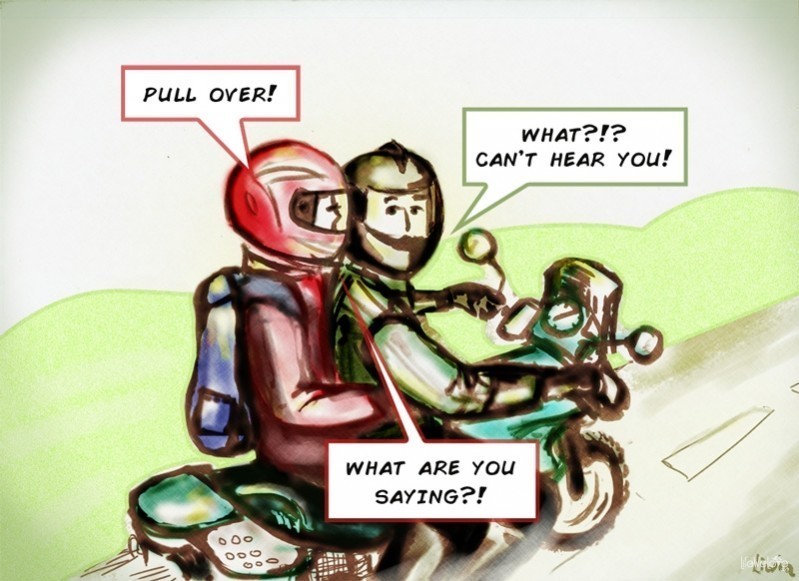
Below you will find a description and our opinions about the mentioned wired motorcycle intercoms for two.
Tronic H-3167
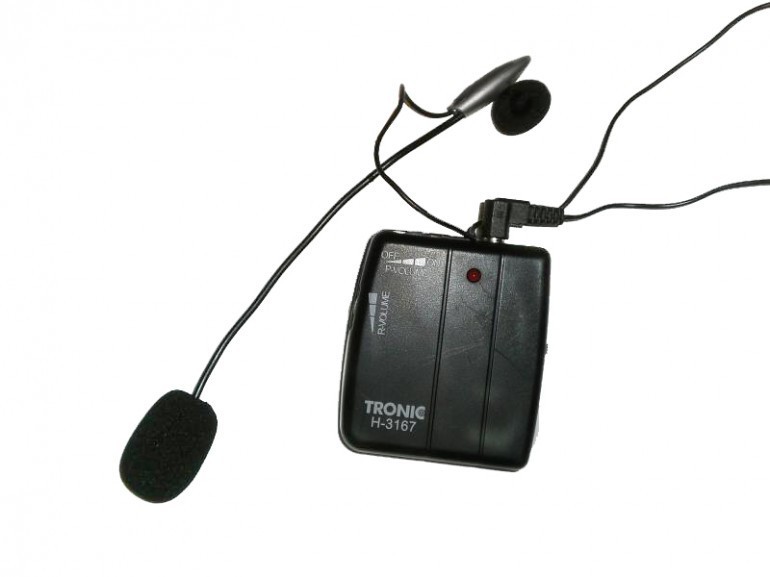
The kit
After unpacking, we find two in-ear headphones with a microphone on a goose-neck and a control unit. Additionally, there is a cable for connecting audio devices included and several adapters for mobile phones.
Features
The device is powered by two AAA batteries and has a very low power consumption (20 mA). It has a buckle, which can be used to attach it to your belt. Headphones are connected to the output of P and R, where R is a driver’s output and P is designed for passenger. Both the passenger and the driver can adjust the volume by potentiometer built into the control unit. Intercom also has an audio input, so you can connect an additional audio source and listen to your favourite songs while talking with another person. You can also use it to connect your mobile, what enables you to answer the phones and hold a conversation. The control unit works in three modes, which can be changed by using a switch placed on the side of the device. The modes are signed with R, D and P. In the R mode, driver can speak and listen to the signal from the device connected to the audio input, so holding conversation on the connected mobile phone is also possible. Passenger in this mode can only listen to what the driver says. The P mode works the same way for the passenger as the R mode for the driver. In position D, both passenger and driver can talk and hear each other and listen to music from an additional source.
In practice
Placing the headphone in your ear and then putting an integral helmet is problematic in the beginning. The headphone starts to fall out of your ear and you have to remove the helmet and start all over again, or try to carry the headphone to your ear while wearing the helmet. Over time, you get some practice and more often you manage to do that at the first time. The control unit is small, so it can be put into a jacket pocket or attached to a trouser belt. Once everything is connected and ready, we start off and converse. The reception quality is satisfactory. We hear clearly and without major disruptions. The quality of music from a connected smartphone is not astonishing, but is too not bad. The level of our satisfaction begins to decline with increasing speed. Up to 60-70 km/h communication is good, above that speed the wind can be felt and the voice in the headphones gets distorted. At a speed of 80-90 km/h, it is difficult to communicate, especially when it comes to understanding the words of the driver. He or she faces all the speed noise that must be processed through one’s microphone, which is deprived of any decent noise filter. The only cover of the microphone is a sponge that you need to glue yourself as it often falls out and can be lost easily. A phone conversation we made with the use of this intercom positively surprised us. Its quality was quite good. However you cannot establish a dialogue between driver, passenger and an external caller. Either the driver or passenger can talk with the GSM network’s user, after switching to the right mode. While driving, you can easily, unintentionally nudge the cable going from the control unit to the ear. In result the headphone falls out and you need to stop to restore the connection. The big advantage of this intercom is a very low power consumption. One set of ordinary AAA batteries is enough for the whole season, even if you forget to turn the device off several times or it is on all night. It happened a few times to us. :)
Summary
This intercom is suitable only for a slow city ride. Audibility level decreases with the speed greater than 60-70 km/h or less (depending on a helmet’s tightness). We used it at the beginning, when riding by scooter and it was acceptable then. After we got a motorbike, the device did not make it at faster speeds. After the whole season of using the intercom and regular tensioning of the headset cable, one pair broke down in the middle of the second season.
Pluses:
- Price (depending on the promotion: EUR 10-30);
- Low power consumption;
- The ability to make phone calls;
- Robust construction;
- Small and lightweight control unit with clamp for attaching.
Drawbacks:
- In-ear headphone falling out;
- Distorted sound at higher speeds;
- No hardware noise filter;
- Too delicate and unstable sponges covering microphones.
ZIO-2
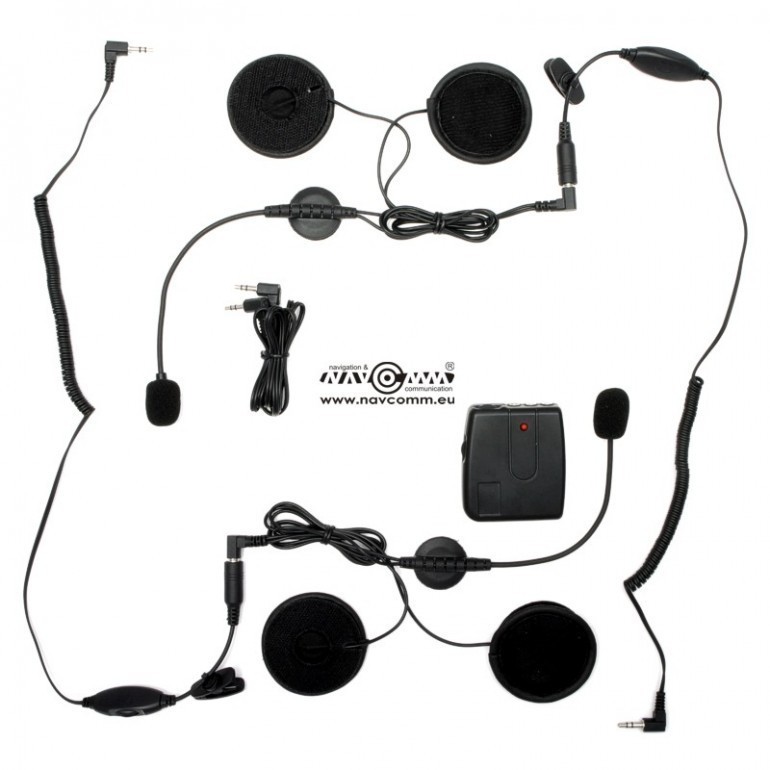
The kit
Two flat pair of headphones with Velcros on the outer side, a microphone and additional Velcro to mount in the lining of the helmet. Two extenders with a spring-loaded cable, cable for connecting an audio device with the control unit.
Features
Intercom is powered by two AAA batteries and consumes very little power. The construction of the control unit is almost identical to the intercom Tronic H-3167 and has two headphone outputs and one input for your audio device. Driver and passenger have the ability to adjust the volume via potentiometers placed on the control unit and on extension leads with spring-loaded cables. The device operates in only one mode, in which users can simultaneously talk and listen to music from a connected additional source. You cannout make calls though, because the signal from microphone is directed only to the second set of headphones.
In practice
Comfort and quality of communication will depend on the correct insertion of your headphones into the lining of the helmet. Although the headphones are flat, if incorrectly mounted, they can be painful for your ears and you will not feel comfortable. Misplacing the headphones will unable receiving the optimal sound quality, for example, it will be too quiet. After a few trials and rides we managed to reach the optimum. The first impression of communication at stopover is very good, we hear each other exquisitely well thanks to the very good speakers and microphones. After exceeding the speed of 50-60 km/h we can no longer converse. The voice becomes distorted, you can hear the strong wind whistling. The higher the speed, the worse it gets. Turning the volume down improves the sound reception, but not well enough. The very good headphones and microphone exceed quality of the control unit, which is a very simple device and does not have any noise filter. The microphone is too sensitive to properly process the sound to another recipient. Wrapping it with another layer of sponge is for nothing. The quality of the music played from a connected phone is great, you can hear even some bass, but unfortunately you can fully enjoy it only during your layovers. Otherwise the sound is distorted by the wind penetrating into the microphone.
Summary
The only thing worth spending money on this intercom are the headphones which are made soundly (two years without a fault) and provide a very good audio quality (for this type of headphones). The spring extention cable with a potentiometer is also an interesting solution. The spring-loaded form of the cable to some extension prevents damage of the headset.
Price for the intercom on the producer’s website is about EUR 34.
Pluses:
- Very good quality headphones with microphone;
- Spring Extension Cable;
- Small and lightweight control unit with clamp for attaching.
Drawbacks:
- Poor quality control unit without any anti-interference filters;
- Too delicate and unstable sponges covering microphones;
- No possibility to make phone calls.
Albrecht AE 600
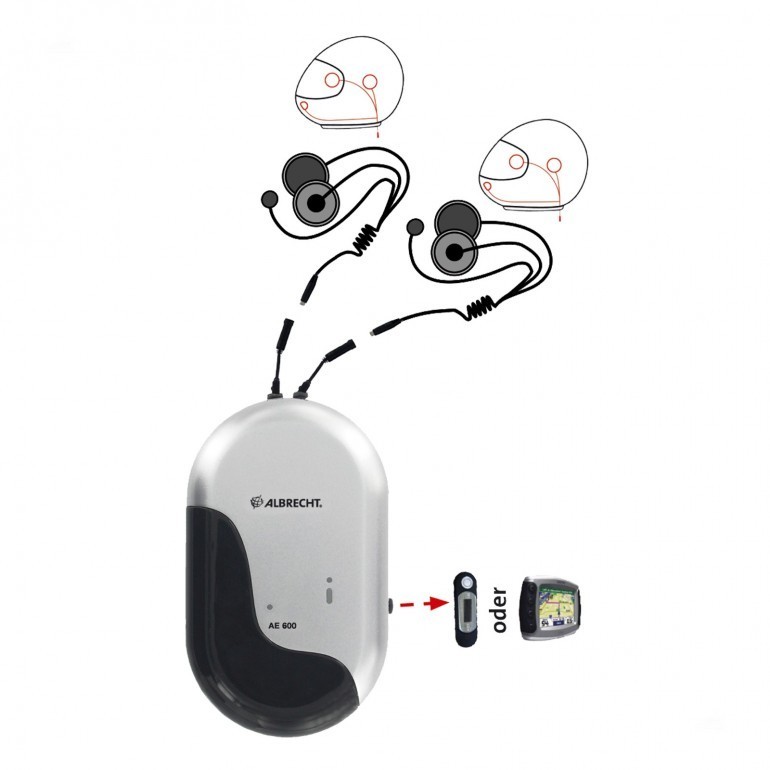
The kit
A control unit with two pairs of headphones with a Velcro attachment and microphone on a flexible wire, one spring extension cable and one ordinary cable to connect an audio device.
Intercom is offered with 3 different sets of headphones to choose from, which are designed for the integral, Jet, jaw and mixed helmets.
Features
Powered by 3 AAA batteries, Albrecht AE 600 works in three modes of microphone sensitivity. According to the manufacturer, these are the modes designed for driving in different conditions: city, route, highway. In daily use, you usually stick to one selected mode. The device has no volume control. The only built-in potentiometer of the control unit is to adjust the volume of the external audio source. The intercom has a built-in noise filtering, which ensures a high quality of communication.
In practice
When it comes to assembling of the headphones, it is the same procedure as with intercom ZIO-2. It is important to fix the headphones in the right place of helmet’s lining. The control unit is bigger than the two previously described (twice as long) and does not have a buckle to attach. So you have to keep it in your jacket pocket, or in a tank bag. Call quality at speeds of 0-140 km/h is impressive. A built-in anti-interference filter does the job perfectly. As far as the microphone sensitivity is concerned, the optimum communication quality at each speed is achieved in the “medium” mode. Music from the smartphone connected to the control unit sounds fine. A better effect is achieved by connecting the headset with intercom ZIO-2. With proper placement of the headphones in the helmet you do not really suffer from the lack of an extra volume control unit, because the sound level is optimal. The real bane of the intercom are attached headsets that go bad too often. After buying a set of 2 pairs of headphones for integral helmets – CHS-300, one did not work immediately after unpacking. Many times I had to repair it and carry a soldering iron with me. In the pictures below you can see the shoddy workmanship of the headphones.
After a year of using the intercom, from the three pairs of headphones there was only one still working. In the other two I would have to rip out the old flexes and install the new ones. In other words, I can only throw them away, since it does not pay off to do anything else with them. Fortunately, you can just pick other headphones. We use a set of intercom ZIO-2. Throughout the season, we had to change the batteries twice. Once at the beginning of the season and second time during a 3-week journey, where the intercom was used daily without turning off during longer stops.
Summary
Overall, we would say the motorcycle Intercom for two Albrecht AE 600 is good value for money, if ignoring the hopeless headset supplied with it. You can always replace it with some other one. The intercom is a bit unhandy without any grapple. It could be a bit smaller, so as not to fill the entire pocket in the jacket. Its huge advantage is a very good quality of communication, especially since it remains at a high level even at highway speeds. The microphone sensitivity adjustment is useful for those, whose helmets are less tight helmets or use headsets equipped with more powerful microphones.
On the internet you can find wrong information about this model. I noticed that some of the product descriptions include features of the higher model – Albrecht AE 600 S, which is more advanced and more expensive. So some of the parameters specified by the manufacturer can confuse and mislead. For example, it is sometimes written than Albrech AE 600 has an automatic volume regulation that turns the music down the moment the driver or passenger starts talking. In truth, it does not.
The price for this intercom is about EUR 60.
Pluses:
- Very good quality of communication;
- Microphone sensitivity regulation;
- Low power consumption.
Drawbacks:
- Poor quality headphones;
- No clasp by the control unit to attach;
- No possibility to make phone calls.
An important advantage of wired intercoms is their low price, comparing to goods of wireless technology. There is also no need to charge the batteries so often. You just change the cheap batteries once or twice a season. Though, slightly annoying thing may be assembling of all the intercom parts after every longer stopover: headphones to extension cables and these, in turn, to the control unit. In addition, you need to turn the unit on and put it somewhere safe. Then the audio device or navigation need to be also connected and set up. This all takes time and irritates you, especially in hot days, when the red-hot sun burns you and you cannot wait to just put your helmet and move towards the cool refreshment. Instead, you have to cook a few minutes in the whole inventory to prepare your intercom. The aggravation may spread along your crew, waiting until you are able to move. Thus, when travelling in a group, it is worth to bear it in mind a prepare to go a few moments earlier than the rest. :)
After all, a connection and communication with a passenger while driving gives another dimension of travel. Maybe for short distances it is not necessary, but for longer rides it is a must for us. We no longer imagine any journeys without a good intercom, when the lyrics of the surrounding space can be interpreted together and the music refreshes better than coffee on a boring highway or when Liwia falls asleep on the back seat. And if the music does not help her and I can hear only silence in the headphones or just knocking of our helmets, I can always wake her and feel safer on the road.


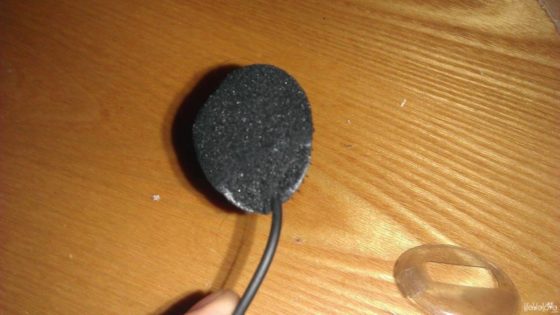



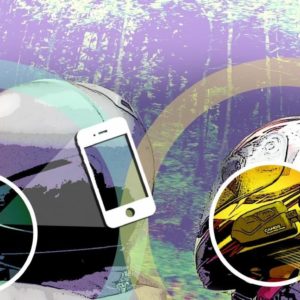



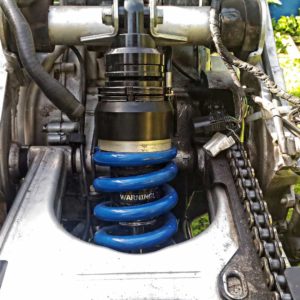

Kirill Tapkov
Hmm, we’ve bought http://www.aliexpress.com/snapshot/302241578.html this intercom, for 7,99$, but we haven’t tried it yet) Anyway, it isn’t big money :D As I understand, cheap intercoms work only in cities (up to 60 km/h), and out of cities we’ll ride like on your first picture of this topic. As we rode all the time :D
Joki
Yep, with this intercom for $7,99 you will probably have to ride like without it :D.
N
Great review, thank you very much!
Joki
Glad to hear it. :)
John
Excellent review -very thorough and helpful -thank you!